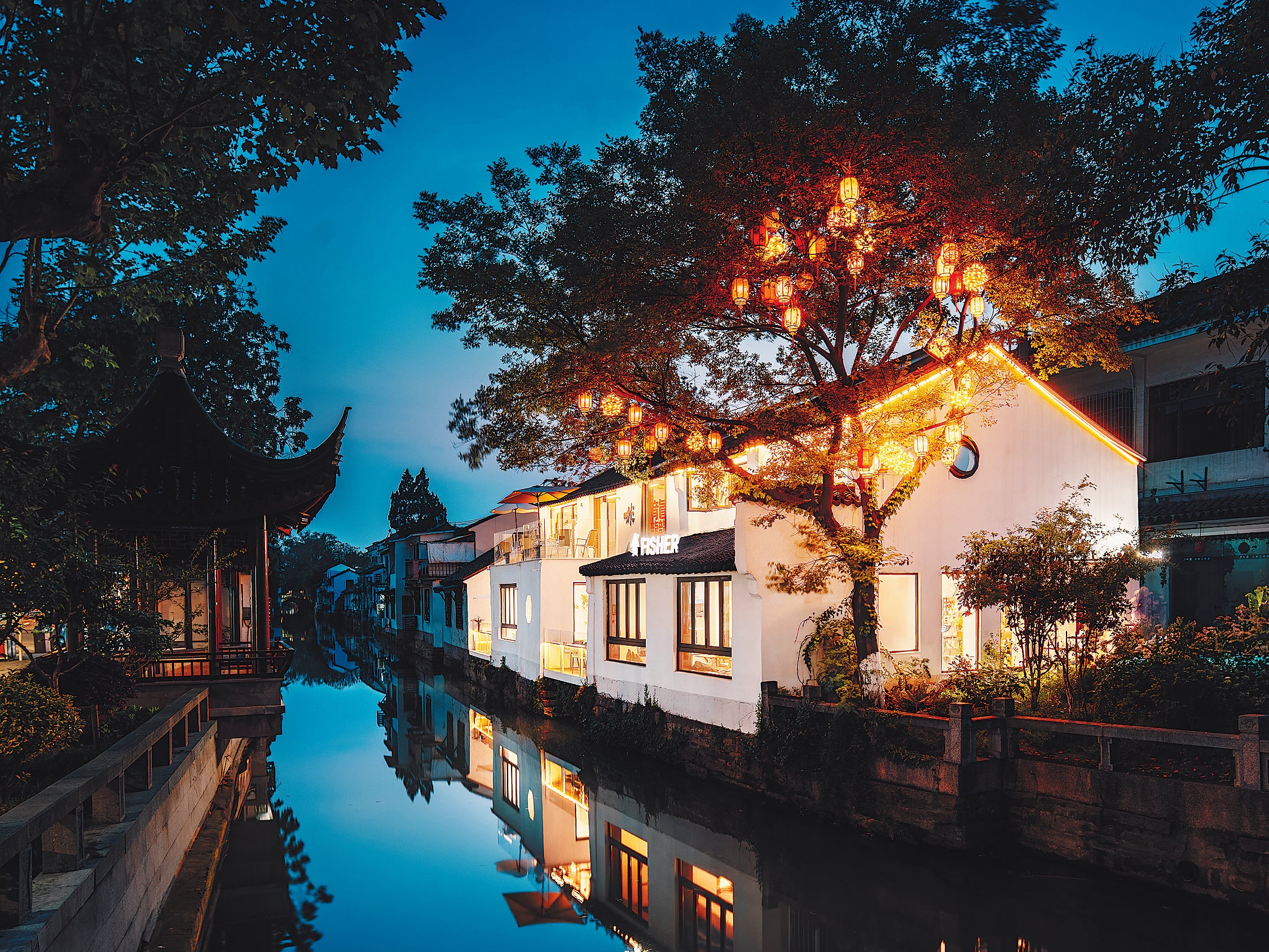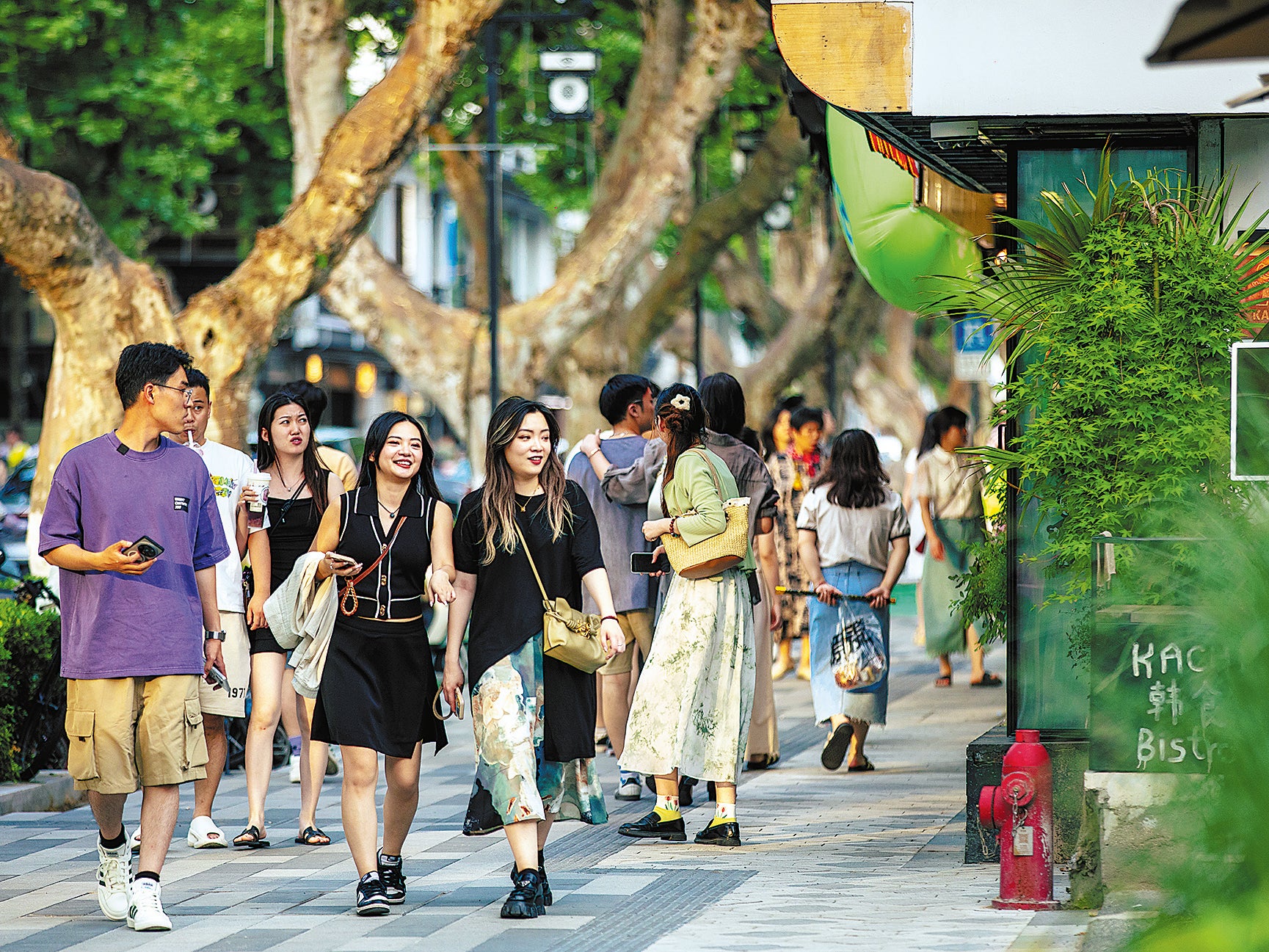Restoring a city’s charm
THE ARTICLES ON THESE PAGES ARE PRODUCED BY CHINA DAILY, WHICH TAKES SOLE RESPONSIBILITY FOR THE CONTENTS

As night falls, an outdoor movie is playing in a public area in front of the Fisher Coffee shop on Shiquan Street in Suzhou, Jiangsu province, captivating residents. Nearby, lights flicker on the river as tourists on boats lift their phones to capture the enchanting scene.
The bustling street and tranquil river, along with the harmonious coexistence of tourists and residents, bring immense joy to He Qing, founder of the coffee shop and who has lived on this street for more than a decade.
“This street is steeped in culture, yet brims with the vibrancy of everyday life. Following last year’s revitalisation, our needs for living, entertainment and work can all be met without leaving the area,” says He.
Situated at the heart of Suzhou’s ancient city area, Shiquan Street has been a bustling hub for centuries. Stretching 1.24 miles, it still retains the traditional layout of streets in Suzhou, where waterways run parallel to roads and streets neighbour rivers.
Classical Suzhou gardens, century-old schools, and traditional residences lie along its length.
Following the nationwide trend of old street renovations, Shiquan Street completed its transformation at the end of June last year, quickly emerging as a trendy destination that draws numerous visitors for photo ops. The quality of life for the 20,000 households residing here has also improved, according to surveys by local communities.

“I think the success of this street’s renovation lies in the fact that everyone’s opinions were respected. Every business owner and resident was able to participate in the renovation and management of the neighbourhood,” says He.
Her coffee shop was originally a traditional residence. The open space in front of it was vacant and not very clean before the renovation. During last year’s renovation, she proposed the idea of taking over this public area and turning it into an outdoor cultural living room for the community, which received strong support from the neighbourhood.
Now, the public area frequently hosts activities organised spontaneously by residents and business owners, such as performances by bands made up of chefs and bartenders, resident choir performances, and community book reading events. It often attracts large numbers of tourists who stop by to participate and take photos.
“The coffee shop feels like home to me and my husband; it’s very cozy,” she says.
Although it was already 8:30 in the evening, a few high school students were dotted around the cafe doing their homework. Residents were sipping coffee and chatting, while tourists sat on the riverside seats enjoying the night view. Occasionally, tour boats passed by, with tourists waving to the people on banks.
As the chief planner and designer of the Shiquan Street renovation, Deng Dong expresses his admiration for the leisurely lifestyle and inherent elegance of Suzhou residents.
“Residents here live with a sense of refinement, and they approach tasks with great meticulousness,” says Deng, who is also vice president of the China Academy of Urban Planning & Design.
Since the beginning of this century, Deng has been involved in renovation projects in Suzhou.
He jokingly refers to himself as a “new-style Suzhou native”. He describes the renovation of Shiquan Street as a successful example of people-oriented development, where residents, shop owners, and the community collaborated in construction and governance. During last year’s renovation, Deng and his team spent a significant amount of time engaging in detailed communication with residents and businesses.
They gathered every individual’s concerns, such as uneven roads and the lack of parking spaces for motorcycles, as well as the community’s shared expectations for their neighbourhood. This process also sparked enthusiasm for participation, leading residents to offer suggestions and voluntarily join renovation efforts.
“The government invested approximately 47 million yuan (£4.89 million) in the project, while businesses and institutions on the street voluntarily contributed more than 100 million yuan (£10.40 million). Their active participation in the neighbourhood’s renovation represents a sustainable model for community development,” says Deng.
